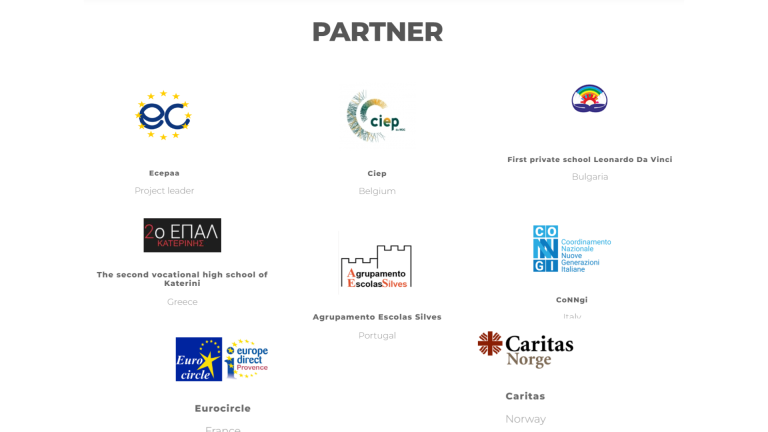Data on youth with migrant education dropout is dramatic.
The Sirius Network and the Migration Policy Institute have long studied this problem. What came out (2015) is the “early school leaving (ESL) rate of young people born outside of the European Union was, on average, more than double that of natives (25.4 percent compared to 11.5 percent)”.
Thus, in line with the general policy of the Erasmus+ Programme, the aim of this proposal is to having Youth with migrant background education high dropout rate reduced (General Objective). As for the specific objective, we want to develop a tool that supports students with migrant background, parents and teachers/trainers/youth workers dealing with youth with migrant background.
Which are the needs and target groups to be addressed?
As we said, information is very often partial information. Vocational teachers, professional trainers and youth workers often work in a “watertight classifications” mode on.
The reason behind this are many: no time, highly specialization, poor curiosity, etc.; therefore, we have started by considering that there is a lack of an integrated and holistic approach tool that supports students with migrant background, parents and teachers/trainers/youth (Specific Problem). Research, studies and our direct experience have pointed out that key issues in the above-mentioned specific problem lies in:
a) Students with migrant background are not sufficiently involved in the education process. They feel themselves more as an object rather than a subject (Problem Cause 1);
b) Busy migrant parents, especially those coming from disadvantaged contexts and countries, see their children education as another problem (and therefore delegate everything to teachers and trainers/youth workers). They rarely consider how a proactive attitude can help their children’s education performance (Problem Cause 2);
c) When it comes to organizations’ needs, teachers and trainers/youth workers have their own methodology and working methods which prevent them, often, to having a more mixed teaching/training approach to students with migrant background (Problem Cause 3).
As for the target groups, IHAVET have identified some of them the choosing of which is, somehow obligatory, due to the topic chosen. Parents, vocational school teachers and youth workers and trainers are a “natural” target as well as youth with migrant background organization. Policy makers committed to social inclusion are inherently interested to this project as well.
TOOLKIT
Expected impact
We assume that the toolkit will impact for sure into the participating organizations since we have 3 schools with hundreds of teachers, training organizations with tens of trainers, etc. During the validation process, teachers, trainers, youth workers will be impacted by the toolkit also because they will be asked to give a feedback on the toolkit itself.
Transferability potential
The toolkit has some transferability potential that in part will be also guaranteed by the fact that it will alsobe translatedin each of the language of the participating organizations. This will help in increase the transferability potential of the tool. Besides, since mostof the organizationsare also involved in some other projects, that means that the toolkit can easily“travel” also from project to project. Finally, as it can be seen in the “dissemination” part, we have planned also the multiplier events during which the toolkit will be presented.4.5 Work division The applicant will coordinate the different task that will be described below while each partner will contribute bringing his own country experience. The partner will be in charge to check if the translation is duly done.
Intellectual output production tasks
To begin with, once we have collected all the relevant information from the research (the questionnaires and the focus group) we will have some of the main points about the toolkit. As said elsewhere, the research is kind of a precondition to go on with the toolkit. Then, we will start assembling the toolkit as it can be seen in the timetable file attached by: drafting the toolkit: each of the partner will be asked to draft according to the data collected in the participating country;testing the toolkit: during the short-term training event the toolkit will be tested and eventually modified accordingly (see short-term event section). translating the toolkit: in order to widen the impact and the transferability potential, the toolkit will be translated in each of the participating country language;validating the toolkit: once we got back from the short-term training event, we will start the process of validating the toolkit. We will share toolkit with 200 people (teachers, trainers, youth workers) to validate the toolkit. At this stage, we have notyet defined how to properly validate the toolkit, although there are some ideas on it,but we prefer also to havethe research results.finalizing the toolkit validation: once the process is over, we will finalize the toolkit.toolkit publication: as said, the publication will consist of 34 pages. And will be ready for the end of the project.
Methodology applied
There isa combination of methodology: some quantitative methods to validate the toolkit, working group methods to develop the toolkit will be used as well as some writing technique.


